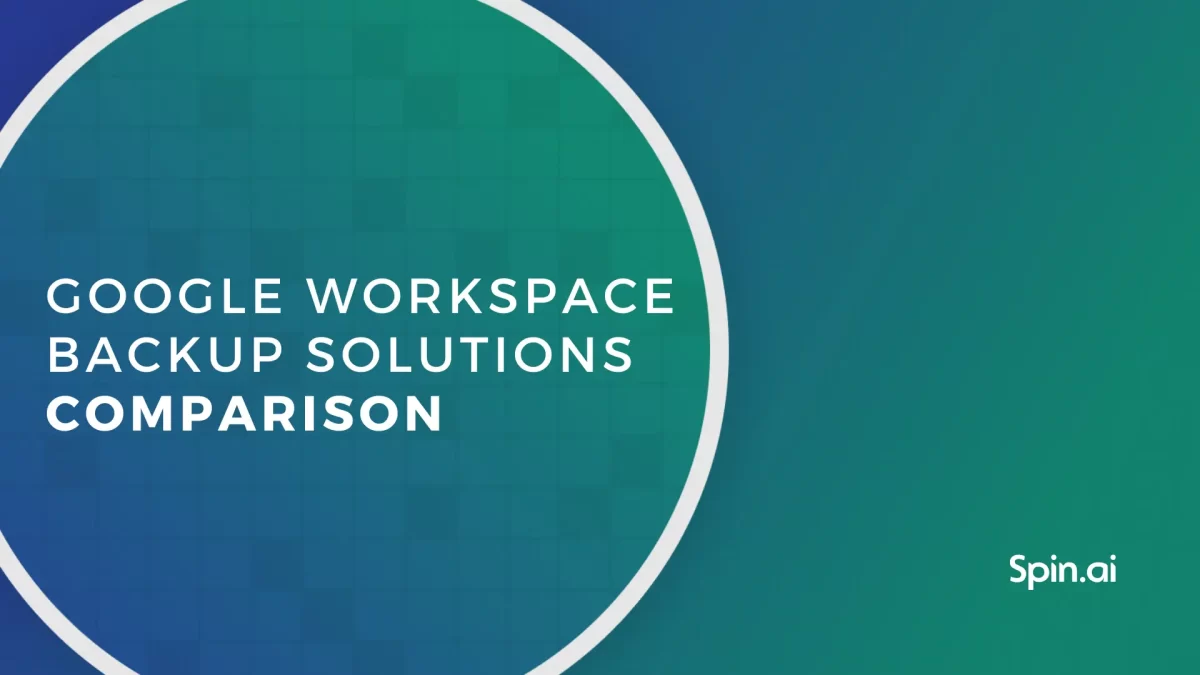6 Dangerous Microsoft Office 365 Security Concerns for Business

Over six million data records get lost or stolen every single day. The Cost of a Data Breach Study concluded that businesses pay $148 per one lost or stolen data record. Usually, the cost of lost or stolen data items reaches hundreds or even thousands of dollars per company. You can do the math.
But the most substantial price for a data breach is not the loss of money – it’s the loss of trust. Trust of your customers, your partners, your suppliers, and other people that may be affected by the data breach.
So how secure is Office 365 in terms of data breaches and data losses? Its security depends on whether a business owner can foresee the potential risks and knows how to prevent them.
As an award-winning cloud security provider, we would like to talk about the common security concerns for O365 users. Also, we will provide you with some Office 365 security best practices you must be aware of to keep your data safe. And don’t worry, the things we’ll cover are easy to implement even without a big team of IT professionals.
1. The Absence of a Password Policy for Employees – About 81% of company data breaches happened due to poor passwords
One of the main O365 security issues is password carelessness. According to the Verizon Data Breach Investigations Report, more than 70% of workers reuse passwords. And most of them have passwords a hacker with a mediocre password-cracking machine would crack in a few minutes.
It’s widespread for people to use the same password for multiple websites. They may also make them too simple so they could remember them easily. This approach puts your data at a huge risk.
Imagine for a moment that your employee uses one password to access their social media profiles and to sign in to their Office 365 corporate account. What will happen, if someone cracks their password from Instagram? This someone will try this password to enter other systems as well, including your Office 365. At this very moment, your company data gets endangered.
How to make passwords secure:
1. Set up a reliable password policy. It must include the following rules:
- The password uniqueness. Your employees’ password to your company’s Office 365 must be unique;
- The password length. It should include eight characters at least;
- The variety of characters. The password should consist of uppercase and lowercase letters plus digits.
- The semantic complexity. You should never use widespread passwords like “asdqwe123”, “abcdefg,” “123456”, “password,” “1111111”. Even with adding some digits or letters, these passwords are still as easy as pie for cracking mechanisms.
- The expiration date. The passwords should be changed at least once a year.
2. A strong password alone doesn’t guarantee complete safety. Your employee’s password to Office 365 might get cracked or stolen during a phishing attack. To ensure that your data is safe, get a backup for Office 365.
2. Using Outdated Software – companies pay about $36 295 to return their data from hacker
By “software” we mean using old versions of Office like Office 2007 / 2010 / 2013 and not checking for the system updates and patches in Office 365. If you are guilty of it too, be ready for some security repercussions.
All software has it’s “expiration date.” At some point, Microsoft stops releasing updates for a given product version, and it gets abandoned. Without regular security updates, the software is unable to resist malicious programs that become more and more sophisticated. Some types of ransomware can even spread across computer networks.
In the cloud, you can get the whole system infected with ransomware or a virus. So make sure you don’t leave room for security loopholes.
How to secure your data from malware:
- One of the best practices for Office 365 security monitoring is to get the latest security updates. Check out this article from the Office support team on how to install system updates on your particular Office, and always be up to date.
- Keep your antivirus software up to date. However, don’t forget that even an updated antivirus may not detect advanced malware strains.
- Backup your data with professional backup services. Only those can guarantee you can recover your information quickly and easily.
3. Generous Sharing Permissions
Employees share links to documents all the time. Sometimes (intentionally or not) these links could be shared with outsiders who will gladly use the information in it for their benefit. If people outside your organization gain access to the links, they are able to watch, save, and edit internal company documents. Here’s how hackers use permissions you give to seize your Microsoft account:
Your internal company information is the most valuable asset, and there are many ways outsiders can benefit from attacking it. Cybercriminals can sell you information or encrypt it with ransomware to demand money.
How to secure information privacy:
To avoid data breaches, you can limit or forbid the external linking to some or all documents. To do so, go to Admin > Service Settings > sites and document sharing. Choose to Turn off external sharing.
4. Disabled Multi-Factor Authentication
Until recently, multi-factor authentication (MFA) was considered as an additional layer of security. Now, it is basic for most companies.
With MFA enabled, when a user signs in, they have to enter their login and password and type a code that has been sent on their phone number, or answer a phone call. This way, a system ensures only veritable users can get access to the account. By using only username/password credential authentication, you put your data in danger.
How to enable Multi-Factor Authentication
MFA function is available in Office 365. Just go to the Admin Center, select users and groups, and press Set Up near the Multi-factor Authentication. You can choose particular users or include everyone.
5. Lack of Confidential / Personal Information Sharing Rule
Some information should not be shared under any circumstances. It is sensitive information like credit card numbers and personally identifiable information. If this information is leaked, you can face huge legal implications and fees.
How to secure information privacy:
Create a cybersecurity policy to define the parameters by which the system can recognize sensitive information. This way the system won’t let this data out or save it to SharePoint/ One Drive. Using Microsoft Office 365 security settings, you can trace and block this type of information from being shared.
6. Lack of Security Training for Employees
One of the leading Microsoft Office 365 security issues is not cyberattacks – it’s human error. Human mistakes are among the biggest cyber threats, and this is what makes these mistakes so dangerous.
Security education for employees is like preventive medicine: it works, but often delayed as a secondary concern. Businesses don’t care about potential risks until they become urgent problems with tremendous potential losses.
At the same time, human error is on the top of cybersecurity concerns. People’s carelessness and ignorance in security matters cause notorious losses for businesses.
Here are just a few human mistakes that will harm your organization:
- Sharing sensitive and secret company information with third-parties
- Clicking on infected links and attachments
- Accidentally deleting important information
- Being easily tricked by social engineering tactics.
How to educate your employees:
Security awareness training for all new-coming employees is a must, so provide them with one. Here are some of the best security training providers you can choose from.
However, training can only decrease the probability of critical human error. Even a trained employee can overwrite important files or fall for a phishing attack.
Having a backup will help you avoid the negative impact of human error and complement other actions to protect your data.
Read next: How to backup your Office 365 data.
Frequently Asked Questions
What are the common security issues related to using Office 365?
Using Office 365, like any other cloud-based service, comes with a set of security considerations. Common security issues related to using Office 365 include phishing attacks, unauthorized access, data loss, insider threats, malware and ransomware, compliance and data privacy, mobile device security, lack of awareness and training programs, insufficient patch management, and configuration errors.
Is Microsoft 365 more secure than Gmail?
Both Microsoft 365 and Gmail can be made secure with the right configurations and additional security measures. While Microsoft 365 offers more advanced security features related to compliance, encryption, and DPL, the best email platform for a business depends on several factors, including how they are configured, the security practices of the organization using them, and the specific security features offered by each service.
After all, the security of your email largely depends on how well you implement security best practices within your organization. Both Microsoft 365 and Gmail can be made highly secure
Is Office 365 vulnerable?
Like any software or cloud-based service, Office 365 can be vulnerable to security threats and issues if not properly configured and managed. Vulnerabilities in Office 365 are generally attributed to misconfigurations, human error, or inadequate security practices rather than inherent flaws in the service itself.
Was this helpful?
- 1. The Absence of a Password Policy for Employees – About 81% of company data breaches happened due to poor passwords
- 2. Using Outdated Software – companies pay about $36 295 to return their data from hacker
- 3. Generous Sharing Permissions
- 4. Disabled Multi-Factor Authentication
- 5. Lack of Confidential / Personal Information Sharing Rule
- 6. Lack of Security Training for Employees
- Frequently Asked Questions
How Can You Maximize SaaS Security Benefits?
Let's get started with a live demo
Latest blog posts
Google Workspace Backup Solutions Comparison
April 26, 2024The number of Google Workspace (formerly GSuite) backup solutions is overwhelming, and choosing the right... Read more
What’s the Best Google Workspace Backup Solution?
April 26, 2024In today’s digital age, businesses rely heavily on cloud-based services like Google Workspace (G Suite)... Read more
Reducing Browser Extension Risk with Spin.AI Risk Assessment + Perc...
April 24, 2024Spin.AI is collaborating with Perception Point: integrating the Spin.AI Browser Extension Risk Assessment within the... Read more


